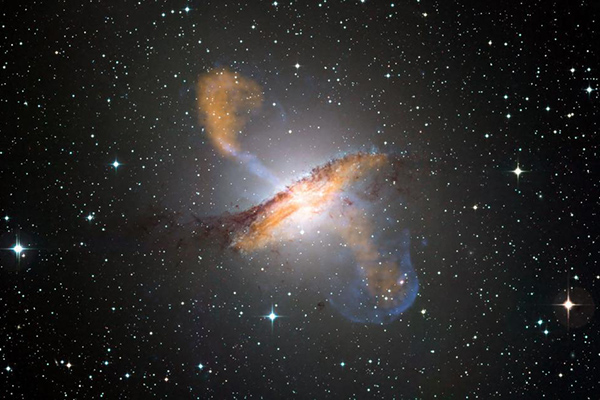
Full Text:
Young galaxies blaze with bright new stars forming at a rapid rate, but star formation eventually shuts down as a galaxy evolves. A new study shows that the mass of the black hole in the center of the galaxy determines how soon this "quenching" of star formation occurs. Every massive galaxy has a central supermassive black hole, more than a million times more massive than the sun, revealing its presence through its gravitational effects on the galaxy's stars and sometimes powering the energetic radiation from an active galactic nucleus.
The energy pouring into a galaxy from an active galactic nucleus is thought to turn off star formation by heating and dispelling the gas that would otherwise condense into stars as it cooled. The new results reveal a continuous interplay between black hole activity and star formation throughout a galaxy's life, affecting every generation of stars formed as the galaxy evolves. Until now, observational evidence of a connection between supermassive black holes and star formation had been lacking.Image credit: ESO/WFI (Optical); MPIfR/ESO/APEX/A.Weiss et al. (Submillimetre); NASA/CXC/CfA/R.Kraft et al. (X-ray)